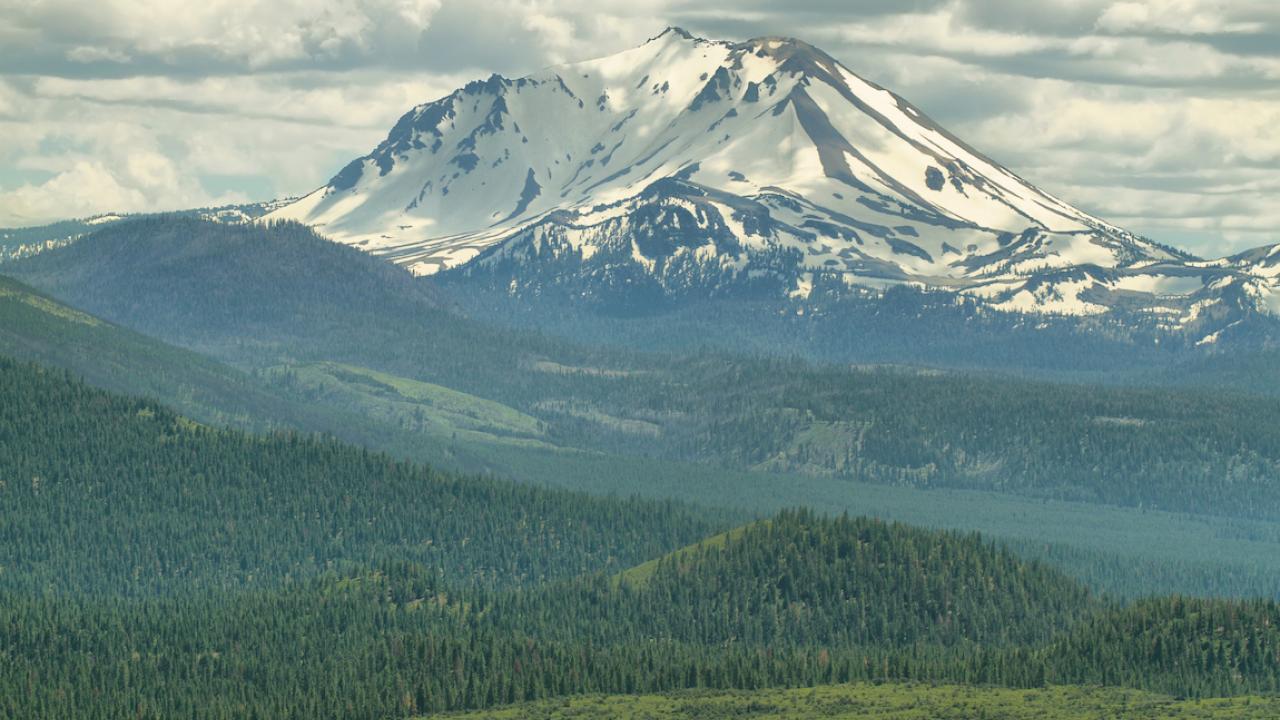With a terrain covering volcanoes, steaming fumaroles and forestlands, the Lassen Field Station became the newest addition to the University of California, Davis’ Natural Reserve System today (May 16), following approval by the UC Board of Regents.
The addition marks the sixth UC Davis Natural Reserve in a system that now spans Northern California from its alpine forests and across grassland prairies to the shores of Bodega Bay. It is among 41 reserves in the UC-wide reserve system.
In partnership with the National Park Service, the Lassen Field Station will be based at the headquarters of Lassen Volcanic National Park in the Tehama County town of Mineral. The partnership offers researchers access to a variety of park facilities such as cabins, classroom space and camping. The reserve will streamline the research permit process and open new avenues for research, teaching and public outreach.
“This field station is part of a much larger gateway to other managed forest lands,” said Jeffrey Clary, associate director of the UC Davis Natural Reserve System. “In some ways, it’s not just the park but the region that is becoming available. We are all really excited to have more research in that part of the state.”
Volcanoes, forests and snow
Lassen’s volcanic landscape, forests and steep, often snow-covered terrain provide new research and field class opportunities in disciplines including geology, wildfire and forestry, climate change, snowpack and water resources, and polar ecology.

“The Lassen Field Station fills a big ecological and geographical gap in the UC Natural Reserve System and extends UC Davis field stations into completely new ecosystems,” said Professor Andrew Latimer of the UC Davis Department of Plant Sciences. “Access to this whole gradient — from the tree line to the tide line — is important for studying how the state’s ecosystems change and shift in response to rising temperatures and increasingly variable rainfall.”
Community outreach
The field station also expands UC Davis’ presence in an underserved region in northeast California. Researchers hope to make science education opportunities available to the community through hikes and talks led by visiting researchers, as well as becoming part of K-12 outreach programs already in place through the National Park Service.
“The park already has a number of programs tying local schools to park-based learning experiences, and we want to loop in researchers at the new field station to share their knowledge with this public,” said Jim Richardson, park superintendent. “It’s exciting to bring the expertise of these scientists into our mix, with each partner contributing their strengths.”
The UC regents today also approved the Point Reyes Field Station, which will be operated by UC Berkeley.
UC Davis natural reserves are a unit of the John Muir Institute of the Environment.
Media Resources
Jeffrey Clary, UC Davis Natural Reserve System, 530-752-9178, jjclary@ucdavis.edu
Andrew Latimer, UC Davis Plant Sciences, 530-309-9111, amlatimer@ucdavis.edu
Kat Kerlin, UC Davis News and Media Relations, 530-750-9195, kekerlin@ucdavis.edu
